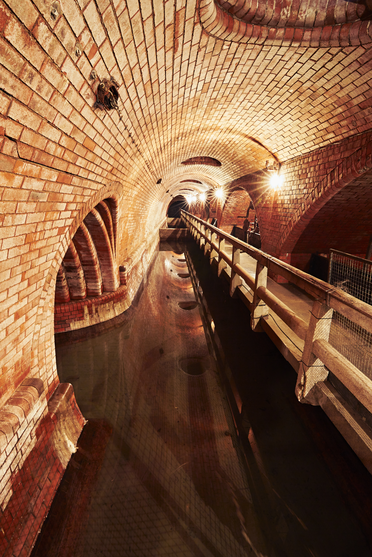Subproject 3: Detailed Sewer Network Models

In SP3, we are developing detailed computational models for neighbourhood sewer networks for infectious disease surveillance. Many pathogens are detectable in wastewater, and thus testing wastewater samples for epidemiological tracking of pathogens (such as SARS-CoV-2 has proven to be a useful tool. A major advantage of wastewater testing is that it is independent of testing and reporting strategies and can provide a picture of the incidence of infection across the population.
For this, however, the amount of virus particles that originally entered the wastewater must be determined from the measured virus particle load in the wastewater in order to be able to draw conclusions about the infection process. To do this, we need to know how the pathogens or their particles are transported and chemically degraded in the sewage system. The accuracy of the tracing depends on the level of detail of the underlying sewer network model and the knowledge about the sampling conditions.
So far, detailed models for the spread of virus fragments in the sewage network are not yet widely available. We will develop the detailed model on the basis of infrastructure data, data on specific freshwater consumption as well as population density. In addition, seasonal weather data will be used and integrated into the detailed model in order to be able to represent dispersion effects due to precipitation events.
The detailed model will provide insights from wastewater sample measurements on the infection event and also facilitate the determination of the region where the virus was most likely released into the wastewater network.
As a proof-of-principle for the construction of detailed models and the identification of sub-catchments with increased viral loads, the district of Hasenbergl in Munich, Germany, is considered. For this district, we have comprehensive information on the sewer network and collect experimental data (SP5).
The detailed sewer network model will be linked to the INSIDe platform (SP1) to connect the transmission models (SP2) with wastewater observations.
Furthermore, the detailed model will be used to plausibilise and validate the coarse-grained models developed in WP4.
Contact: Dr. Christian Schaum, Dr. Steffen Krause and Natalie Tomza, swa@unibw.de
